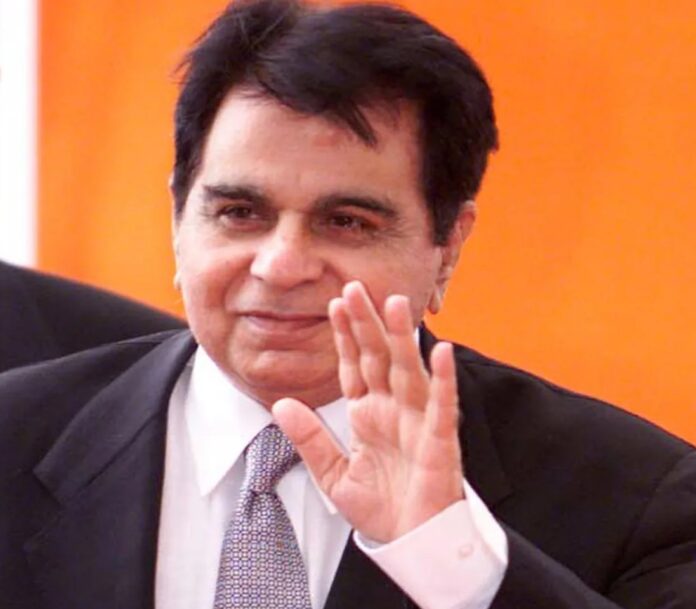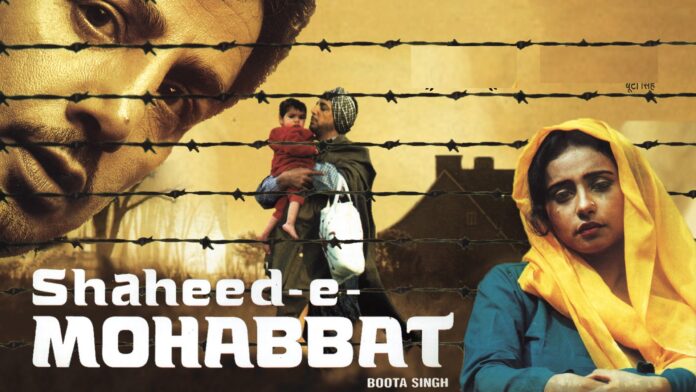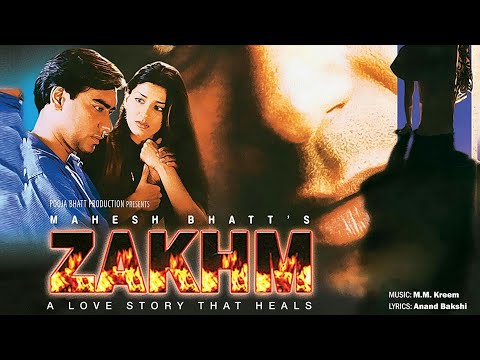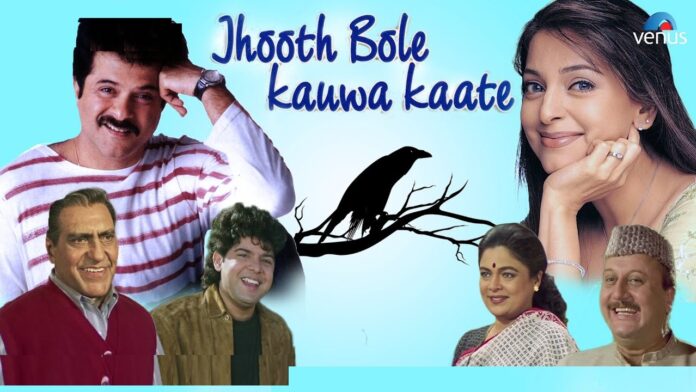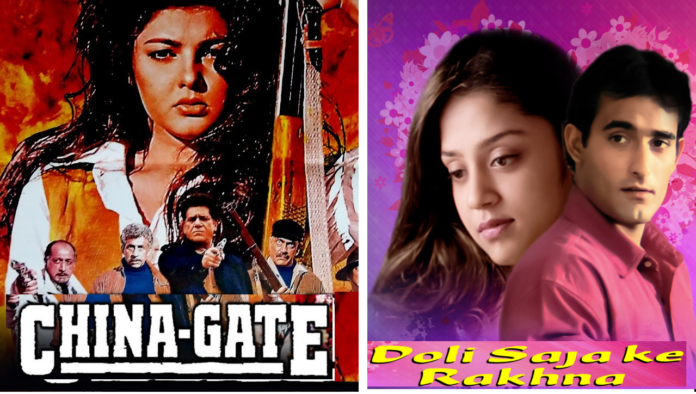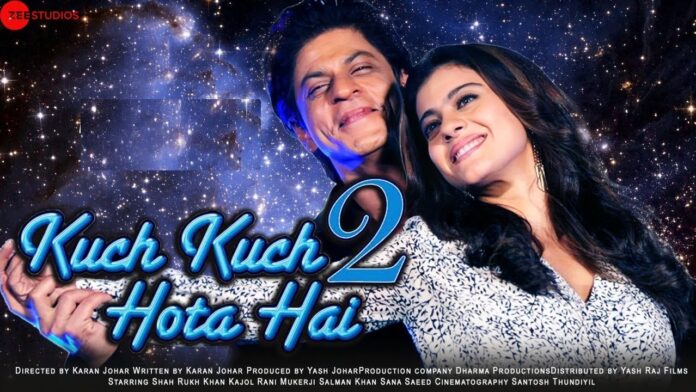DILIP KUMAR RECOVERING
Dilip Kumar, who underwent bypass surgery of the heart on 1st January at Lilavati Hospital, Bandra, Bombay, is recuperating.
‘PYAAR TO HONA HI THA’ SILVER JUBILEE
Baba Films’ Pyaar To Hona Hi Tha entered combined silver jubilee week on 8th January at Alankar, Bombay (in matinee shows). The film stars Ajay Devgan, Kajol, Om Puri, Bijay Anand and Kashmira Shah. Producer: Gordhan Tanwani. Director: Anees Bazmee. Music: Jatin Lalit. Lyrics: Sameer.
KARISMA KAPOOR INJURED
Karisma Kapoor was injured recently while shooting for Hum Saath Saath Hain. She, however, participated in the shooting of Biwi No. 1 in Hyderabad last week and this, for scenes not requiring much movement. Since she is not completely alright, she has been advised rest. Following her injury, the foreign shooting schedule of Haseena Maan Jayegi, starring her, has had to be postponed. The schedule was to have begun this week.
TWO AHMEDABAD CINEMAS RAIDED FOR SCREENING ‘BITS’
Two Ahmedabad cinemas viz. Hanjer and Sheetal, Gomtipur, were raided by the city police last week, following a tip-off that the cinemas were screening uncensored portions from foreign erotic films. During the raid, it was discovered that uncensored ‘bits’, added to Jail House Girl (at Hanjer) and Chained Girls (at Sheetal), were being screened regularly in the late night shows. Nine persons, including the manager and staff of Sheetal cinema, were arrested, while action was initiated against Harish Popat, the manager of Hanjer cinema.
GIRISH SHAH’S DAUGHTER TO WED
Marriage of Kunti, daughter of Gujarat distributor-exhibitor Girish Shah, with Anand will be solemnised on 24th January in Ahmedabad. A reception will be held the same evening.
PRODUCTION NEWS
Salim’s Film In Full Swing
The unit of Aftab Music Industries’ Prod. No. 7 left on Jan. 6 for a 7-day shooting stint at Khandala. The film is being produced by Salim and stars Bobby Deol, Rani Mukerji, Kulbhushan Kharbanda, Ashish Vidyarthi, Ashutosh Rana, Vishwajeet Pradhan, Razzak Khan, Mushtaq Khan and Amrish Puri. Story writer & director: Raj Kanwar. Screenplay: Robin Bhatt and Sutanu Gupta. Dialogues: Santosh Saroj. Music director Anu Malik recorded the first song of the film at Sahara India on Jan. 5. It was penned by Sameer.
‘Arjun Pandit’ In Dehradun, Hardwar
Ratan International’s Arjun Pandit is being shot in Dehradun, Hardwar and Rishikesh. Sunny Deol, Juhi Chawla, Shahbaaz Khan and others are participating in the month-long schedule. The film is being directed by Rahul Rawail for producer Babloo (N.R.) Pachisia.
‘Pukaar’ Complete
Boney Kapoor and S.K. Films Enterprises’ Pukaar is complete following the 4-day shooting spell at Surve Farm in Panvel near Bombay. Only a few days’ patchwork shooting now remains to be done. Directed by Rajkumar Santoshi for producer Surinder Kapoor, the film stars Anil Kapoor, Madhuri Dixit, Namrata Shirodkar, Mukesh Rishi, Girish Karnad, Mohan Agashe, Om Puri, Govind Namdeo and Danny Denzongpa. Majrooh Sultanpuri’s lyrics are set to tune by A.R. Rahman. Action: Tinnu Verma. Bharat Shah is the associate producer.
‘Aa Ab Laut Chalen’ On January 22
The first copy of R.K. Films & Studios P. Ltd.’s Aa Ab Laut Chalen will come out today (Jan. 9). It will be seen by the CBFC on Jan. 11/12. The film, directed by Rishi Kapoor and produced by him jointly with Randhir Kapoor and Rajiv Kapoor, stars Rajesh Khanna, Akshaye Khanna, Aishwarya Rai, Suman Ranganathan, Moushumi Chatterjee, Paresh Rawal, Jaspal Bhatti, Satish Kaushik and Kader Khan. Music is scored by Nadeem Shravan and lyrics are penned by Sameer. The film will be released positively on January 22.
Shah Rukh, Juhi Starrer Progresses
Director Shashilal K. Nair began a 13-day shooting spell of Glamour Films’ Prod. No. 2 on different locales of Bombay on Jan. 4. Shah Rukh Khan and Juhi Chawla are participating alongwith Nirmal Pandey, Bharat Dabholkar, Dilip Joshi, Rehman Naushad and child artistes. Jackie Shroff also plays a stellar role in the film being produced by Nazir Ahmed. It has music by A.R. Rahman and lyrics by Mehboob. Dialogues: Sanjay Chhel. Cinematography: S. Kumar. Art: Nitin Desai.
‘Haseena Maan Jayegi’ 8-Day Spell
An 8-day shooting stint of Rahul Productions’ Haseena Maan Jayegi will begin in Bombay on various locations from Jan. 13. Sanjay Dutt, Govinda, Kader Khan, Anupam Kher, Satish Kaushik, Aroona Irani, Razzak Khan and Ashish Vidyarthi will participate. The film, being directed by David Dhawan for producer Smita Thackeray, stars Karisma Kapoor and Pooja Batra in the female leads. Other cast: Paresh Rawal, Mohan Joshi, Aasif Sheikh, Pushpa Verma, Asrani and Bindu (in a guest appearance). Story-screenplay: Yunus Sejawal and Imtiaz Patel. Dialogues: Rumi Jafri. Music: Anu Malik. Lyrics: Sameer. Cinematographer: K.S. Prakash Rao. Art: R. Verman. Bharat Shah presents the film.
Chandrachur Starts Dubbing For ‘Silsila Hai Pyar Ka’
Chandrachur Singh commenced his dubbing for N.N. Sippy Productions’ Silsila Hai Pyar Ka yesterday (Jan. 8) at B.R. The film, shooting of which is almost complete, co-stars Karisma Kapoor, Shakti Kapoor, Mishka Khanna, Aroona Irani, Saeed Jaffrey, Nilam Singh, Alok Nath and Danny Denzongpa. It is directed by Shrabani Deodhar for producer N.N. Sippy. Cameraman: Debu Deodhar. Music: Jatin Lalit. Lyrics: Sameer.
SIGNED
Dev Anand Signs New Girl For ‘Censor’
Dev Anand will introduce Mohini Sharma in his new film, Censor. She will play the romantic lead opposite Vinay Anand.
YOU ASKED IT
What, according to you, should have been the correct price of China Gate for a major circuit, taking into consideration its cast and director but not bearing in mind its cost and business?
– The appropriate price would have been Rs. 1 to 1.25 crore per major circuit.
How many releases will Aamir Khan have in 1999?
– Four — SARFAROSH, 1947 (EARTH), MANN and MELA. In all probability, all the four will be released before August.
What price would an ‘A’ grade producer’s Shah Rukh Khan starrer fetch for the Overseas circuit?
– More than 6 crore! Maybe, even 7 to 8 crore.
CENSOR NEWS
Suresh Productions’ Hum Aapke Dil Mein Rehte Hain, seen on 8th in Hyderabad, has been passed with U certificate, without cut.
R.K. Films & Studios’ Aa Ab Laut Chalen (length 4848.05 metres in 19 reels) was applied on 8th.
Jackie Shroff Entertainment Ltd.’s Grahan (length 4276.04 metres in 16 reels), applied on 5th and seen on 6th, has been passed for adults, with cuts.
IMPORTED FILMS
Pam Coats & Buena Vista International’s Mulan was given C.C. No. CFL/1/1/99 (U) dt. 4-1-’99; length 2406.45 metres in 5 reels (no cut). Applicant: Columbia Tristar Films of India Ltd.
D.R.M. Combines’ Mata Hari was seen on 5th.
Columbia Tristar Films of India Ltd.’s Jane Austin’s Mafia was applied on 6th, and I Still Know What You Did Last Summer was applied on 7th.
Warner Brothers (F.E.) Inc.’s Blade (revised) was applied on 5th.
Virgo Films’ Snake Lady was applied on 6th.
20th Century Fox India Inc.’s The Siege was applied on 7th.
Koneru Films’ Save Me was applied on 8th.
DO YOU KNOW?
* The video cassettes of Rajshri’s blockbuster, HUM AAPKE HAIN KOUN..!, were released on 30th December ’98 — that is, more than four years after the film’s theatrical release. Ultra has released the video cassettes with beautiful packaging. Ultra had also released Rajshri’s earlier hit, MAINE PYAR KIYA, on video on the same date nine years earlier — that is, on 30th December, 1989.
* The Bombay distributors of PYAAR TO HONA HI THA have released 25 prints of the film this week in Bombay city and suburbs and Maharashtra to coincide with the film’s silver jubilee. The same distributors (Devgan’s Entertainment) had revived their ISHQ with 50 prints in its golden jubilee week last year.
* A Tamil film — RAJASTHAN — will be released on 14th January in the Overseas circuit with as many as 150 prints! No film, not even a Hindi one, has so far been released in Overseas with such a large number of prints. The film, directed by R.K. Selvamani, stars Sarath Kumar and Vijayashanti and has cost about Rs. 20 crore to make!
* V.N. Films, the Miraj district sub-distributor of KKHH, has sent expensive vinyl boards of the film for display at ‘B’ and ‘C’ class centres of Miraj region. This is, perhaps, the first time that such expensive publicity is being displayed in ‘B’ and ‘C’ class centres like Wadgaon, Shirol, Wai and Gadhinglaj.
* FIRE, which was released in Hardwar at Payal Palace last week without prior publicity, collected only 4,602/- on the opening day but the week closed at 78,565/-. Two shows on the second day were cancelled due to agitation against the film by Bajrang Dal activists, and it collected 1,883/- in the remaining two shows. But collections shot up from third day (due to publicity by cinema management as also the controversy). The collections were: 3rd day 11,870/-, 4th day 12,964/-, 5th day 13,612/-, 6th day 20,926/-, and 7th day 12,708/-.
3-E
Education-Entertainment-Enlightenment
Bhatti Springs One More
Trust Jaspal Bhatti to come up with something like this. The master satirist thought up a clever gimmick for the premiere release of his Mahaul Theek Hai (Punjabi) at Batra cinema, Chandigarh, a couple of weeks back. On the occasion, Bhatti invited the director general of police of Punjab & Haryana and in his presence, he felicitated three top black marketeers of cinema tickets in Chandigarh. He offered them shawls and coconuts and reasoned, among peals of laughter, that he was doing so simply because it is the black marketeer who has the power to make or break a film.
Line Inspectors Aapke Office Mein Rehte Hain?
Producer D. Rama Naidu has appointed 25 line inspectors to supervise the business transacted by the distributors of his forthcoming, Hum Aapke Dil Mein Rehte Hain. The line inspectors will visit distributors of the various territories and oversee the film’s business in the different circuits. Last heard, the distributors were humming something to the effect of Hum aapke sar pe baith-te hain…!
The Birthday That Never Was
“Happy birthday” and “Many happy returns of the day” read the messages on the numerous bouquets of flowers top financier Bharat Shah received on 2nd January. But it wasn’t his birthday that day. Obviously, some florist, who had sent out a list of birthdays, had goofed up and the result was that Shah had his house full of flowers sent by friends. Incidentally, Bharat Shah is a Leo and his birthday falls on 5th August.
A Hit Film: Reason To Rejoice Or Repent?
It would shock trade people to know that although Bandhan has done and is still doing wonderful business all over India, its producers have not received a single naya paisa as their share of overflow from distributors of most of the circuits. And this when the successful film is celebrating 100 glorious days of its run everywhere today. Glorious? Yes, of course, for the distributors who paid reasonable MG royalties (at places, the ratio was less than a crore) for the film. But there’s nothing glorious about its success for the producers, Shyam Bajaj and Narendra Bajaj. Except, perhaps, the good feeling that they have at long last delivered a hit. Some distributors have not even bothered to send the business statements to the producers, leave alone overflow.
The case of Bandhan is not a lone one. It has often been seen that a producer never gets to share overflow from his film if that film happens to be his first hit, after a line of flops. This could be true even if the hit is distributed by distributors who had nothing to do with his earlier flops. Of course, this is not to say that if the distributor of the hit and the earlier flop/s is the same, he has a right to not submit true accounts of the overflow. When a producer’s film flops, it is a painful experience for him. But if he gets no share from his hit film, the pain is even greater.
Many distributors have this mistaken impression that they are well within their rights to offset their losses of some films against profits of the other films released by them. So what if the producers of the flops and the hits are in no way related or connected! Even a child would say, this practice is unethical, but our distributors have been following it since years. The MG royalty agreements of distribution, under which the distributors are to share overflow with the producer, lose their sanctity in cases like these.
The reasons for the producers of Bandhan not being able to share in its success are a combination of the above. One has heard of aate mein namak jitni (chori) but the case of Bandhan looks like namak mein aata! Why just Bandhan, a distributor of a 25% circuit has just sent about Rs. 20 lakh overflow to the producers of a blockbuster like Raja Hindustani. And about 50% of this has come one whole year after it became due. The actual share of the producers in the overflow would be at least Rs. 50 lakh!
If distributors crib and cry about high film prices and the practice of producers to not show trials of their films to them before their release, why don’t they do something about their dishonest brothers too? Shocked that I refer to them as “dishonest”? Actually, I too am shocked at my usage of the word. Can somebody help me with a more appropriate word which would be at least 10 times harsher than the word “dishonest”? Because that would be the honest description of such…… you know what I mean.
– Komal Nahta





























